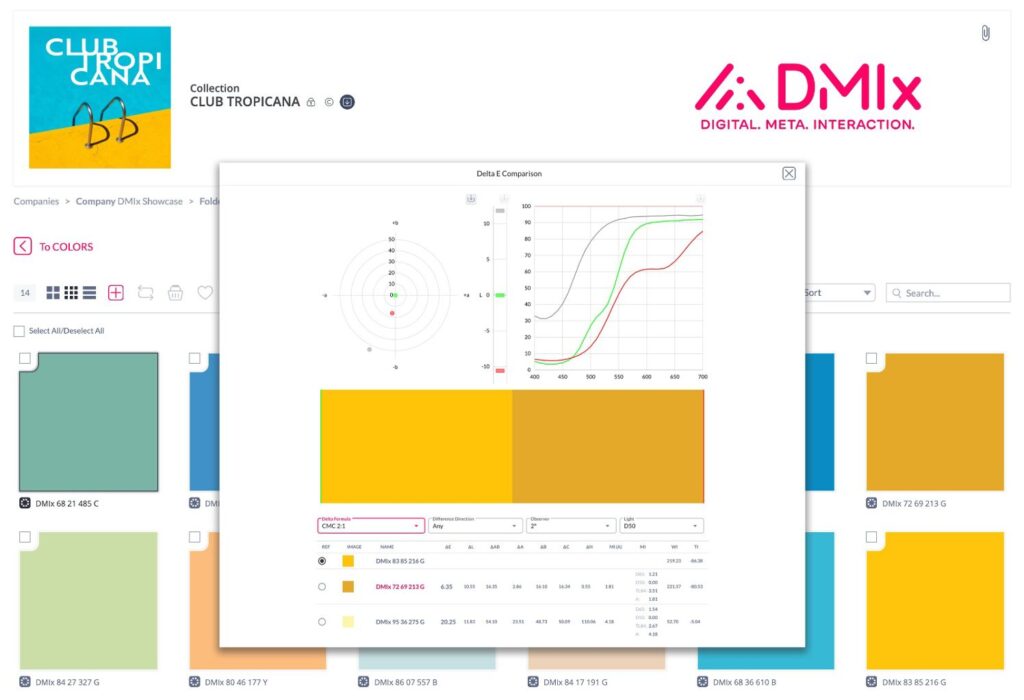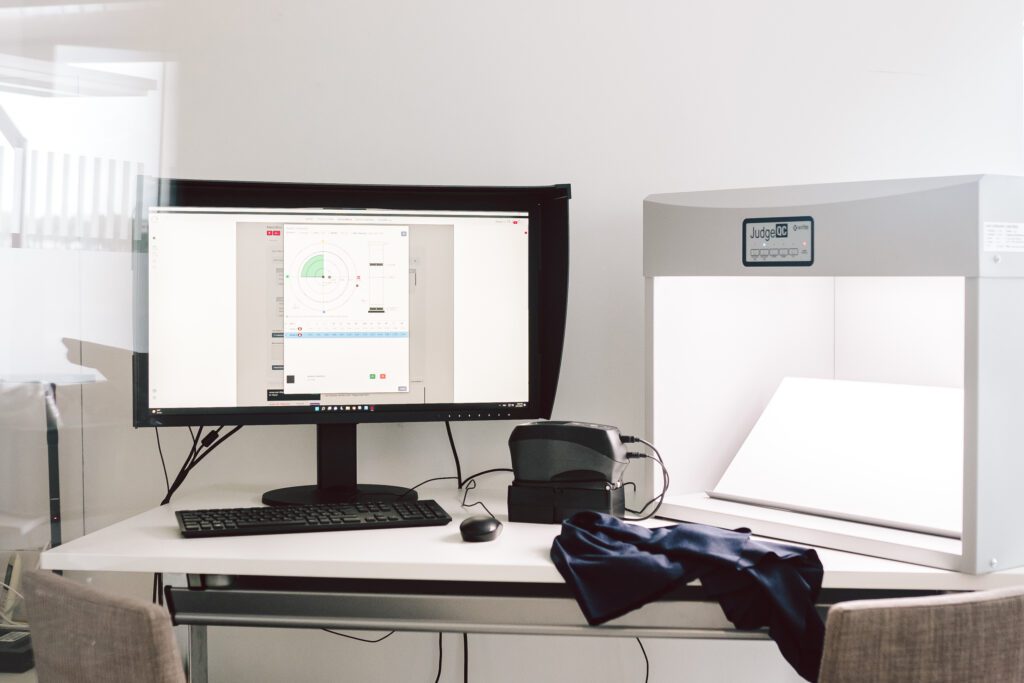Digitization of the value chain in terms of Sustainability
- minutes reading time
Digital tools for specifying and communicating color significantly reduce the environmental impact of the textile industry. Anna, Colorist & Digital Pioneer at Sympatex, explains the collaboration and joint solution approaches of Sympatex and ColorDigital GmbH.

As employees at Sympatex, we all have the ambition to leave as little trace as possible on our planet. Every season we look for new tools, work on new technologies and get to know fantastic materials. In doing so, we do more than just adapt to developments. We are more concerned with developing products for the next generation. We uncover potential for the outdoor and textile industry and create the conditions for an open exchange and forward-looking collaboration with our brand partners and suppliers. To this end, we at Sympatex are now using digital color programs. By using digital tools for specifying and communicating color, experts in the textile and outdoor industry can approve colors faster and more efficiently, while at the same time drastically reducing the environmental impact of the textile industry.
5 Questions for Anna, Colorist & Digital Pioneer at Sympatex
1. Anna, you work in color management and material digitization at Sympatex. In this role, you introduced a holistic, interaction and data-driven textile supply chain- in collaboration with DMIx. Can you please give a brief introduction to the project?
DMIx (Digital. Meta. Interaction.) offers forward-looking tools for digital collaboration between brands in the textile and outdoor industry, as well as suppliers. The product range here extends from a 3D « material library » to automated color approvals of bulk production. Implementing these tools saves important resources and reduces costs for all parties involved. It is particularly important to us that we also further reduce our CO2 footprint in this way. What is certainly interesting for our customers is the shortened delivery time for our products. It also makes us ready for a digital, 3-dimensional way of working.

2. What do we mean by « digital product development »?
Many apparel companies are now no longer working with physical prototypes, which take up a lot of resources such as fabric, paper, energy, etc., but are relying on 3-dimensional virtual prototyping e.g. via CLO (3D software for apparel design). In this way, the product designers first develop their later physical garments on the screen in a resource-saving and time-saving manner until a final version has been determined. Only then does the garment go into production as usual.
Another option for digital product development is to first develop new materials virtually, for example to be able to precisely map certain customer requirements in advance. Once the customer has finished customizing the new material, it can go into mass production. This not only saves resources, but also a great deal of time and high costs that would normally be incurred for new developments.

3. What does the cooperation with DMIx mean for Sympatex’s brand partners?
Brand partners working with Sympatex can access our 3D material library and use the digital twins of our laminates for their 3D designs, for example, or virtually try out colors and prints in advance. Furthermore, color requests are transmitted directly to us via the cloud and customer-specific color and material collections are created. DMIx becomes the central communication point for all of us for colors, prints, materials and new developments. In addition, mood boards and the latest color trends for upcoming seasons are provided by DMIx. The current Pantone color collection (TCX) will also be stored as a digital QTX file. All brand partners can therefore be fully connected to the DMIx Cloud free of charge and receive training from us.

4. What do you wish for the future in terms of digitalization?
Personally, I would like to see people in the fashion industry understand the advantages of a digital or virtual way of working and use it for themselves, as is already the case in the automotive industry, for example. I think our industry should look to the right and left to learn how well and sensibly others are already using digitalization, for example in prototyping. For me, a digital and a sustainable, resource-saving way of working are very closely related and I wish that more companies would recognize this and jump on the digitalization bandwagon.

5. Sympatex wants to leave as little trace as possible on our planet. How does the collaboration with DMIX help to achieve this goal?
We are already saving important resources, using fewer chemicals and less water. Likewise, significantly less mail is sent around the world. With a 3D material library, physical samples become largely obsolete. Likewise, resources for creating sample material are again saved. Also the possibility for our customers to see their desired colors and prints virtually in advance on the corresponding material saves us many samples that are normally necessary. Especially in the color area, we can work much more precisely with DMIX and thus avoid color deviations and errors that would later lead to unusable material.

About Color Digital GmbH:
ColorDigital GmbH is the company behind DMIx, a unique ecosystem that enables seamless digital interaction between brands and suppliers in the fashion and lifestyle industry. The DMIx platform enables all stakeholders to transition from physical to virtual collection development with real-time digital design sharing, using technology that reproduces colors and textures as realistically as possible. With digital twin technology, human avatars and real-time master data, DMIx enables collaboration with major design software applications and PLM solutions. For all customers, DMIx helps reduce sampling and prototyping costs, accelerates the product development process, and also significantly minimizes the environmental footprint. »
Image source: @DMIx